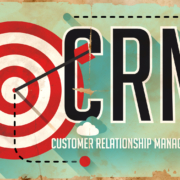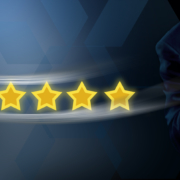How to Increase Sales in Senior Living
Maybe you’re a senior living sales counselor and you’ve been wondering how to increase sales in your community. Maybe you did a search in Google on that precise term—how to increase sales in senior living — and you landed on this blog post. You’re probably holding your breath, hoping this article will have the answer. Good news, folks! It does. And the answer is surprisingly straightforward.
Here’s what you need to do if you want to increase your senior living sales.
You need to work closely with marketing.
Long gone are the days where senior living marketing and sales worked separately. Any businesses that still maintain this separation and silo mentality are doomed for failure. Or, at the very least, they’re certainly not doing as well as they could be.
The line between sales and marketing has blurred. Why? For the simple reason that sales folks no longer drive sales. Buyers drive sales. Marketing’s job is to help enable today’s buyers to buy from you. Which means marketing often needs to think more like sales, and sales folks need to be ready to lend a hand to marketing.
You need to accept that not all leads are created equal.
Sure, some leads will be ready to have a conversation with you today or tomorrow. Those are sales-qualified leads. But most leads are not ready to buy right now. They’re interested in your community, and in senior living in general. But there’s a long way between “interested” and “ready to buy.”
Your job is to focus on the sales-qualified leads while the marketing-qualified leads continue to learn and explore your brand on their own through marketing automation (More on this in a moment.). This can be a tough pill for sales folks to swallow because if you follow this approach, you’ll be working fewer leads, which we know can feel scary.
But the good news is this: You’ll be working better leads, as a result.
You need to use marketing automation.
There’s no sense in bothering with our first two points if you’re going to skimp on the technology. Now, we get it: You’re a sales counselor in an incredibly personal, “high touch” industry. But no amount of charm is going to get you anywhere if you’re not already leaning heavily on marketing automation.
This goes back to our point about buyers being in charge of the sales process. Not marketing. Not sales. Today’s buyers want to interact with your brand (meaning your website, your social media, your emails) anywhere from 5-10 times before talking to anyone in sales. And the only way you can give them the brand experience that they crave is by having powerful marketing automation in place to help them explore your brand in the way they desire.
Why? Because that’s what marketing automation is—it’s a tool that helps deliver the right content to the right prospect at the right time. And guess what? It makes your job easier.
You need to pay attention to results over time.
Sales folks are famous for living in the moment. We get that. But one great week of sales isn’t necessarily an indicator that you’ve landed on the formula for boosting senior living sales in general. Which is precisely why you (and your marketing cohorts) need to embrace analytics.
You need to monitor what’s working and what isn’t. And before you even get to the monitoring part, your team needs to define what they mean by “what’s working.” Definitions will vary for different buyers based on where they are in their journey.
Sure, the ultimate indicator is move-ins, but for buyers who are just starting to research senior living, they’ll need to hit a bunch of milestones along the way before they buy and sign on the dotted line. The marketing and sales teams need to agree on which data and analytics matter.
And here’s the thing: THESE DEFINITIONS WILL CHANGE. What you used as a measuring stick two years ago might not work today. Being flexible is a trait all senior living sales and marketers must embody.
Bonus advice: Use an objective third party to help align your senior living sales and marketing.
The truth is that even the most well-intentioned sales and marketing teams don’t always align goals initially. So if this is the first time your senior living community is talking about things like marketing automation and buyer enablement, consider reaching out to an agency like ours that knows how to bring everyone together.














